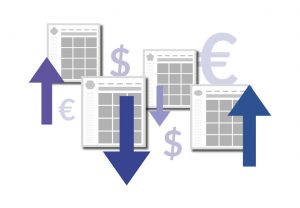
Product codes: EAN code/International Article Number, GTIN code, ASIN code, ISBN code – what are they?
- 14 September 2021
In e-commerce and retail, products that come from a manufacturer are usually equipped with unique product codes. Their role is to help stores, distributors, and wholesalers identify specific merchandise correctly. Although the most popular product code is EAN, there are also others that you should be aware of. In this article, we will tackle the product codes issue – what are they, and what they are for.
In the global retail market, you can come across several numbering systems. All of them are used to identify a specific product type, in one particular configuration, coming from one particular manufacturer. Now, this knowledge is important for several reasons:
- Because product codes describe the product’s characteristics, you can easily locate in an international market precisely the item you need.
- With product codes, it’s much easier to track and keep control over your inventory (e.g., you can check which products are the most and the least popular).
- Thanks to product codes, you can correctly identify products when you’re placing an order at your distributor or manufacturer, ensuring orders are correct.
- Finally, product codes come in handy when it comes to price monitoring. We will talk about that in a moment.
Now, let’s take a look at some of the most extensively used product codes.
The EAN code: What is it?
That’s by far one of the most popular product codes. This abbreviation stands for European article number, although it’s frequently referred to as an international article number. In essence, it’s one and the same code. The EAN code is in the form of a barcode, and it encodes the unique article number.
Today, there are two forms of EAN codes that are particularly popular:
- The GTIN code (Global Trade Item Number): it consists of a barcode and 13 digits
- The GS1-128 code (it’s used to share company, product, and shipping information)
EAN codes are usually presented on the packaging so that they can be quickly scanned and entered into the system or a cash register. In the e-commerce world, EAN codes are not only useful but, in many instances, mandatory, too. For example, if you want to sell your products on Amazon or Google Shopping, you won’t be able to do that without these codes.
You have to remember, though, that the EAN code describes one particular product in one specific version. Therefore, if you sell the same product with different colors, configurations, and versions, you will most likely need several EANs for it.
Lastly, if you’re selling unique or hand-made products (like, for instance, crafts or art), you don’t need an EAN code.
THE GTIN CODE
At this point, we should also explain that all these codes – UPCs, EANs, and ISBNs are all GTIN codes. You can think about GTIN as of code that’s encrypted into these other codes. GTIN-12 (12-digit GTIN code) is, in essence, a UPC code (universal product code) – a code that’s commonly used in the United States and Canada. GTIN-13 (13-digit GTIN code) is the same as EAN, and it’s used globally.
What do you need to know about ASIN codes?
The ASIN abbreviation stands for Amazon standard identification number (ASIN). ASIN is a ten-digit alphanumeric code. Amazon uses it to identify products that are available in their marketplace. This number is automatically assigned when you create/upload a new merchandise in Amazon’s catalog. That said, if you want to sell products on Amazon, you have two options. You can match your product to an already existing ASIN number or create a new one.
The ASIN number is always available on the product information card:

Here, you will find additional information on how to classify products on Amazon. We can shortly say that you will need the GTIN code to create an ASIN number.
What is the ISBN code used for?
The ISBN abbreviation stands for international standard book number. ISBNs comprise 13 digits, and they are used globally to identify books and sometimes other publications (e-books, issues of journals). The ISBN code is commonly used by publishers, booksellers, and libraries.
For you, as a seller, the good news is, it is always the publisher of the book who should apply for the ISBN. Therefore, you have no additional obligations when it comes to selling books and magazines.
Product codes enable price monitoring
Product codes entail one more significant benefit. Without them, it would be more difficult to monitor prices effectively, as they enable us to identify identical products and, thus, compare their prices. From our point of view, the EAN code is the most useful one. Of course, at Dealavo, we can monitor products based on other parameters and our quality assurance team also checks the results in such a situation. You can read more about that in our article: How to monitor the prices of “difficult” products.
We also invite you to take a look at our price monitoring and dynamic pricing tools. Drop us a line and find out how we can help you with tweaking prices in your store!